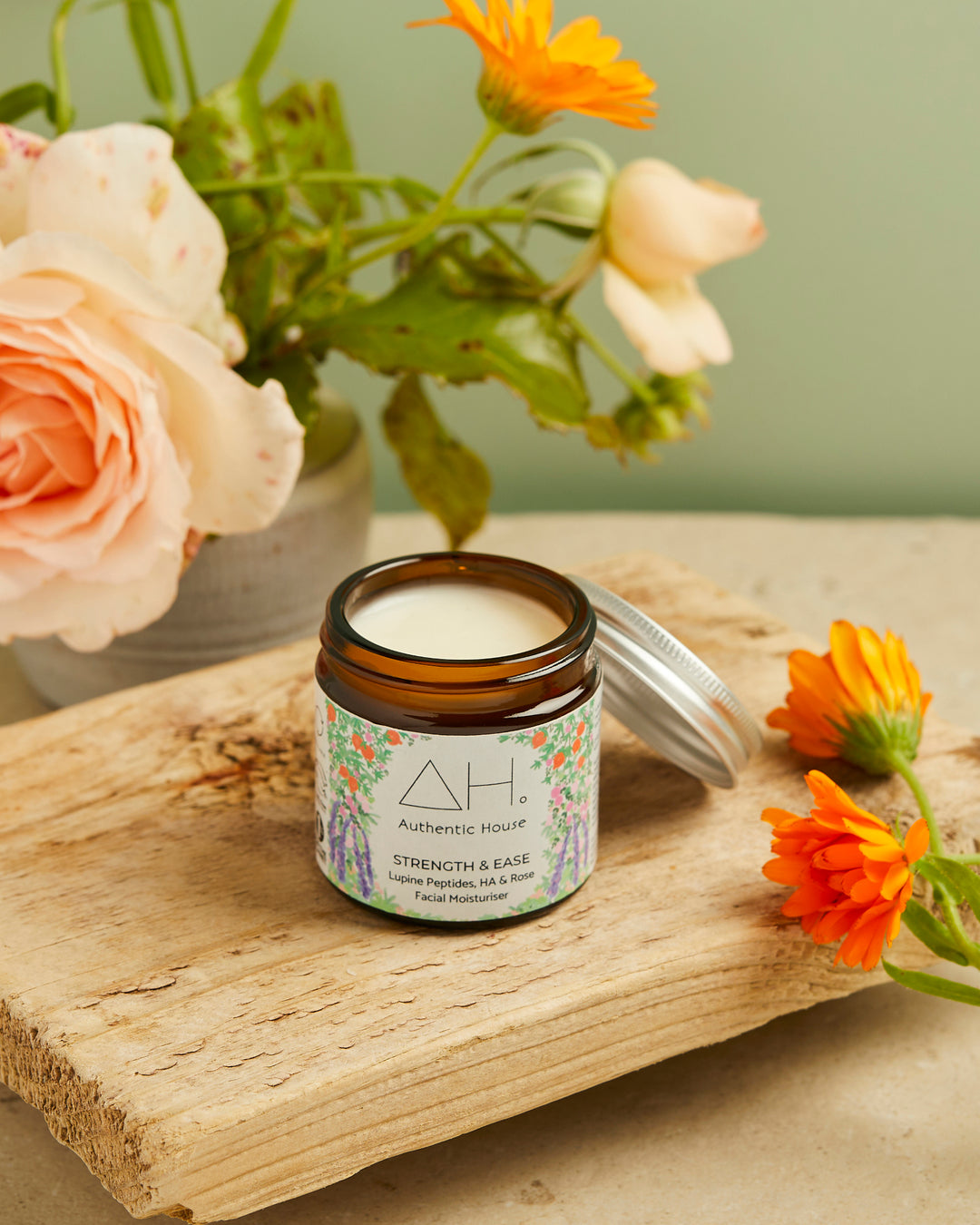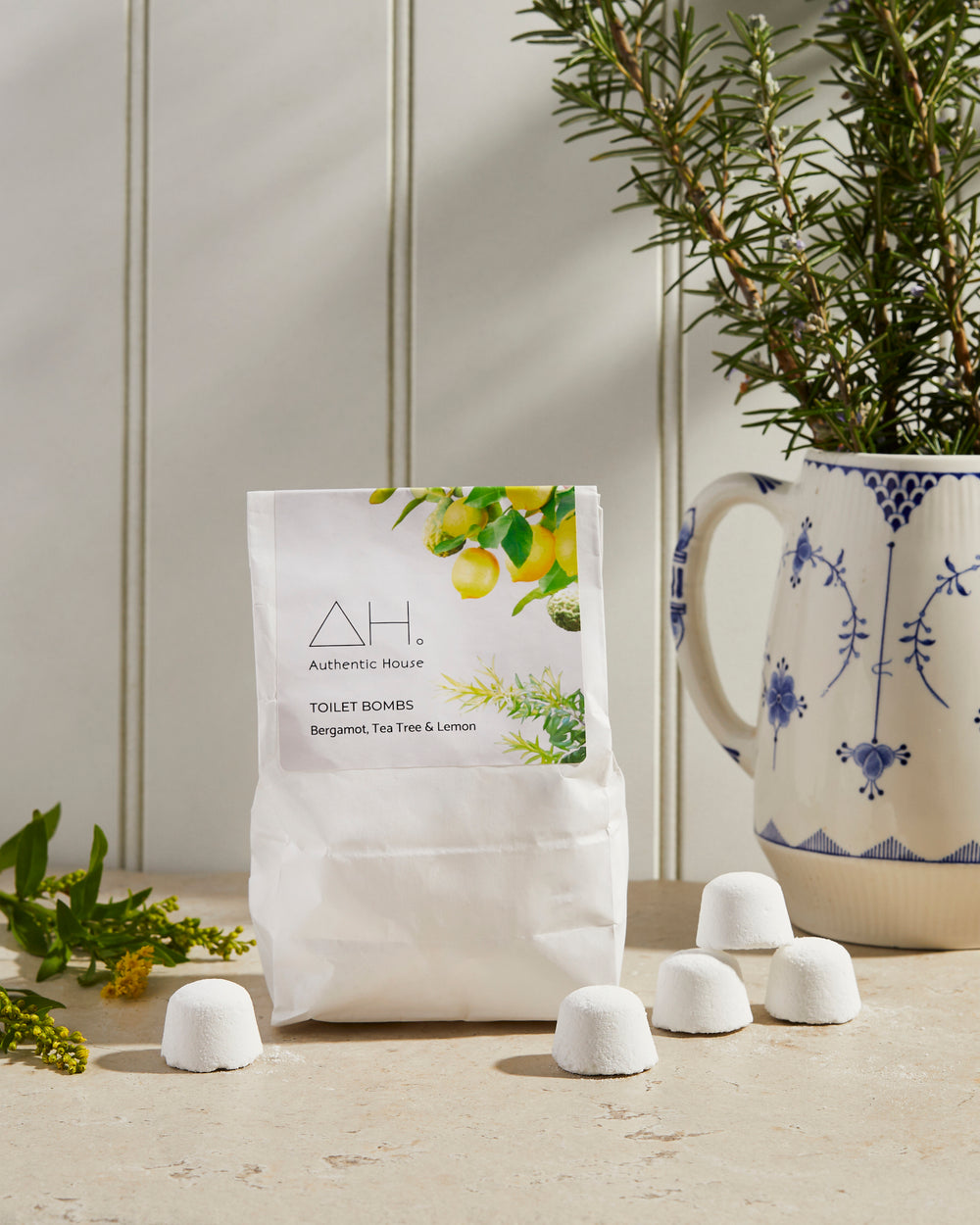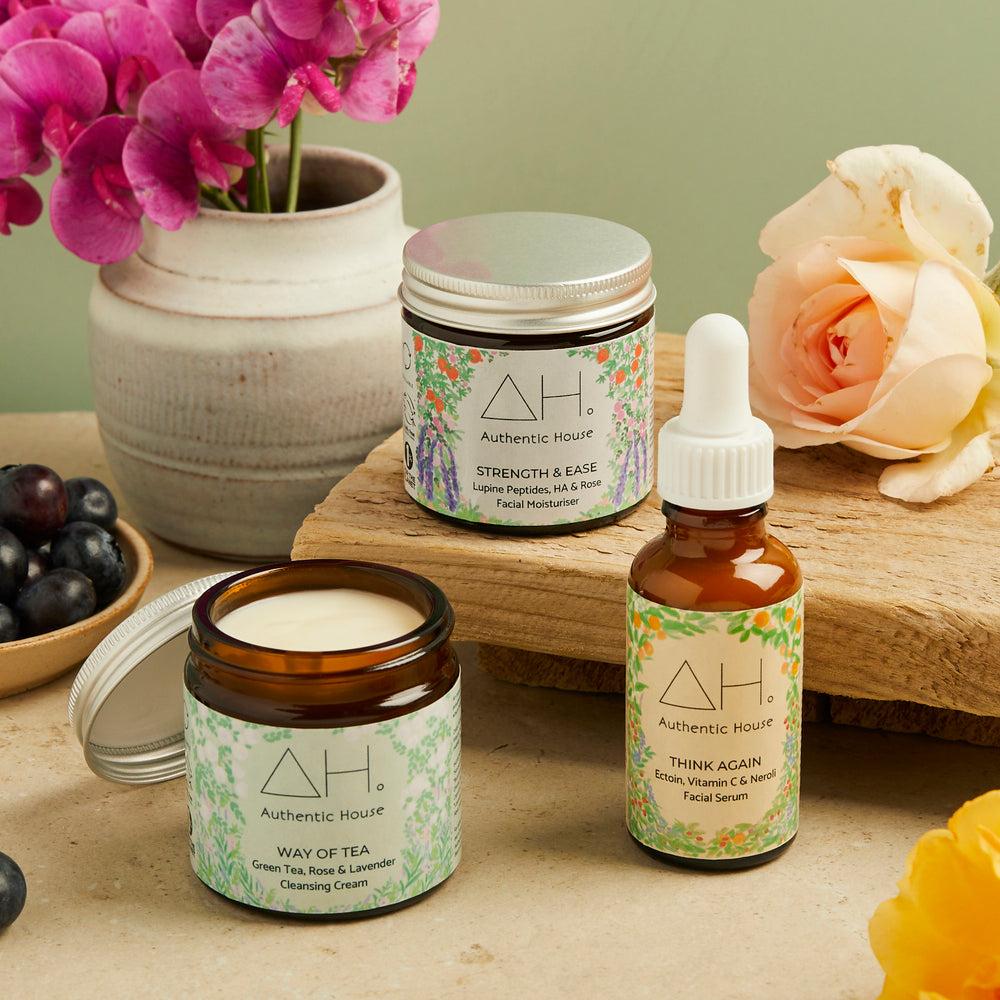5 natural home ideas for sustainable living in spring

Of all the seasons, spring's probably the one we most look forward to! After grey, rainy days in winter, we start to get grey, rainy days with blossom, leaf buds and of course the occasional spot of sunshine too. As the founder of Authentic House, a Cardiff-based small business I began to explore sustainable living, I've picked up a good few natural home ideas along the way.
Learning how to live in harmony with the seasons helps us feel more connected with the natural world and, as you'll see, a lot of these tips will help you live with a lower environmental impact too. So, let's get started; here are my 5 natural home ideas for sustainable living in spring.
1. Gather up branches in a vase for spring décor
This is the ultimate spring idea I've picked up from my mum. She CANNOT walk past a pile of old branches at this time of year, and not pick up a big bunch to take home with her. If you go for a walk in springtime, you'll very likely see cut branches from trimmed hedges and trees - now's the time to trim your own too if you have a garden. Look for leaf buds on your branches or twigs, or even blossom.
Keeping a vase of branches at home is so simple. They tend to look best in a minimal vase made of glass or plain ceramic. Add some water and wait a few days to feel very proud of yourself as little leaves start to bud and grow! The willow twigs below are ones I picked up while cutting garden stems in March.

2. Plant spring bulb pots to keep indoors
Bulbs like daffodils and tulips aren't just for the outside. They also make gorgeous natural home decor ideas for your table, desk and doorstep too.
If you have spring bulbs in your garden already, the absolute easiest way you can bring them indoors is to wait till they're just sprouting, then add them to a container with a little earth. Job done! Once the flowers have died back, you can plant your bulb in the garden again till the next year.
If you've missed this, look out for daffodil and tulip bulbs in pots from local sellers. I've spotted lots of daffodil pots already in our local Blasus Succulent Emporium in Cardiff! Buying pots of bulbs is a minimum effort way of bringing a spring feel inside and you get to support a small business at the same time too.
If you're lucky enough to have a garden, one kind natural home idea you can do for yourself is to put a date in the diary in October when you're going to plant bulbs for spring. I can tell you, when this date comes around, the last thing you'll feel like is digging around in the wet earth, trying to plant bulbs. It is however the best thing to see tulips, daffodils and aliums coming up after a long winter and you'll feel very grateful to your past self!
3. A free way to decorate your pots with moss
I learnt this tip only this March when Kate from The Natural Living Shop posted it on Instagram. Having moss tucked in among your bulbs and succulent pots looks fab and turns homegrown plants into great gifts. You also don't have to shell out lots of money to get it!
You'll never look at cracks in the pavement or old walls in the same way again. I walked through Waterloo Gardens in Cardiff with our dog today and especially was on the lookout for moss. It's everywhere! As long as you aren't damaging a habitat, it does no harm to take a little moss for your pots and it's far more local than mail-ordered moss could ever be - if that's even a thing? I'm sure it would be...
4. Windowsill pea shoots and microgreens: natural home ideas for impatient gardeners
Growing microgreens is is something you can try even in winter if you're craving that bit of green. Pea shoots are an idea I first discovered through Paul from New Leaf Nurseries who once made the most beautiful pea shoot kits for our Authentic House shop. The idea is to grow pea plants to about the size of your finger and get two harvests or spring greens you can have a salad or snack on fresh.
Here I'm about to share with you my pea shoots growing method on the tiniest budget. In bigger supermarkets, go find a box of dried peas - they're 59p in Tesco. Sometimes they're in the international section. Then, take an old mushroom punnet, poke in some drainage holes and scatter it with around 3 cm of soil. Add your peas in a layer on the top and keep them watered.
Dried peas are really cheap and will grow just as good pea shoots as any other variety. If you're growing a full plant though, it's better to go for an organic variety like Paul's.
When you're ready to harvest your peas, cut them just above the first set of growing points - tell me if you know the right word! Then, let the peas resprout and you'll get a second harvest. You can do this with any other seeds like mustard and rocket, but peas are my favourite as they're so fast.
5. Beginner's foraging 101 for spring greens, tea and biscuits
I think you can tell my priorities! If you've never tried foraging before, spring is the easiest time to start. Many of the edible wild plants are ones you'll already know. Learning to forage gives you a way to feel in touch with nature. As the growing season begins again, it's a great excuse to try out all kinds of new recipes for cosy days at home.
Delectable dandelion & lemon biscuits
Let's start with a plant you'll easily know - dandelions! They're unmistakeable and all bloom together in one flush around the start of April. The entire plant is edible and you can add the new leaves to your salads. My favourite part of the plant is the petals though which are rich in antioxidant polyphenols. Here is my dandelion biscuit recipe over on our Authentic House Instagram account if you'd like to try.
Tasty spring greens for foraging newbies
Other plants to look out for are wild garlic which is really obvious from its strong smell. You can eat it in sandwiches, pesto and sprinkle the chopped leaves over your cooking. Three-cornered leeks often grow alongside wild garlic if you know how to look for them. Here's a quick guide I made to spotting this edible plant.
Foraging nettles for brave hands!
Last spring, I went on a foraging walk with Maria from Healing Weeds in Bristol. She spent a lot of time talking about one very common plant, nettles! I will never master how she's able to pick them with her bare hands. It looks like, if you grab them really confidently, the barbs don't have time to sting you.
Anyway, for me, armed with thick gardening gloves, fresh nettles are great to pick and dry for nettle teas. You can also try them in your cooking, though they aren't as tasty in my opinion as other spring greens. I tried and mine sadly turned out a bit fishy! I don't know if this is from the iron inside.
A must-try recipe for elderflower champagne
Last, but not least, May is elderflower champagne season. Here's how I make my fizzy elderflower with the cheeky addition of some sourdough starter (and here's how I make sourdough starter too!)
I began this blog post with the idea to get you inspired about all the ways to create a more natural home in spring. And there are so many! I didn't even get onto feeding the birds to lure them near (with suet cubes or, as my dad tastefully puts it 'bird cocaine') or how to get all your seedlings started on your windowsill with toilet rolls (I can't resist - here's how if you're curious).
I'd love to know, what other ways do you like to bring spring into your home? And lastly, if you found my blog post useful, make sure to subscribe to my mailing list where I share weekly sustainable and natural home ideas for all the times of year. Happy Spring!




















Leave a comment